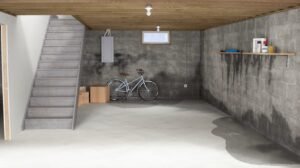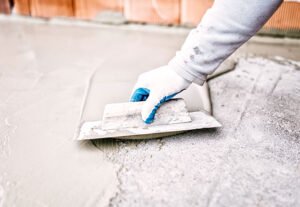Waterproof painting is a vital solution to protect surfaces from moisture damage. Whether it’s your bathroom, basement, water tanks, or exterior walls, this specialized paint offers robust nano-technology that defense against water intrusion and keeps your property safe and secure. But it demands expertise; our skilled team ensures effective application.
Do check the waterproof painting services from PaintMyWalls for all kinds of Waterproof Painting. Let’s discuss waterproof painting Techniques in detail, including tips and techniques based on our own experience.
Table of Contents
ToggleWhat is waterproof paint?
Waterproofing paint is a specialized coating designed to prevent water infiltration, making it ideal for areas prone to dampness or frequent exposure to water. It forms a protective barrier, ensuring surfaces remain dry and resistant to moisture-related issues such as mold, mildew, and structural damage.
9 Tips and Techniques of waterproof painting to prevent your house from water seepage
1. Choose the right paint:
Select waterproof or water-resistant paint specifically designed for exterior surfaces. Acrylic and elastomeric paints work well for houses.
2. Prepare the surface:
Clean the surface thoroughly, removing dirt, mildew, and old paint. Repair cracks and holes using filler and ensure a smooth, even surface.
3. Apply primer:
Use a high-quality waterproof primer to enhance adhesion and create a protective barrier between the surface and the paint.
4. Use waterproof caulk:
Seal gaps around windows, doors, and joints with waterproof caulk. This prevents water infiltration and ensures a tight seal.
5. Invest in elastomeric paint:
Elastomeric paint stretches and contracts, accommodating house movements and preventing water penetration. It’s ideal for areas prone to cracks.
6. Add waterproofing additives:
Enhance paint durability by mixing waterproofing additives. These additives create a barrier, making the paint more resistant to water damage.
7. Opt for Textured Finishes:
Textured finishes, like stucco or textured paint, create a protective layer with natural water-shedding properties, preventing water buildup.
8. Apply multiple coats:
Apply at least two coats of waterproof paint. Ensure each coat dries thoroughly before applying the next for maximum effectiveness.
9. Seek professional help:
For complex projects or if you lack experience, consider hiring a professional waterproof painter. We have the expert team and tools to ensure a high-quality, waterproof finish for your house.
Where is waterproof painting essential?
Waterproof Painting for Internal Walls:
Waterproofing internal walls is crucial, especially in areas prone to humidity like kitchens and bathrooms. Using waterproof paint on internal walls prevents moisture seepage, mold growth, and structural damage, ensuring a dry and healthy indoor environment.
Waterproof Painting for External Walls:
External walls face harsh weather conditions. Waterproof paint acts as a shield, protecting your home from rain, UV rays, and humidity. It prevents cracks and water penetration, maintaining the structural integrity of your building and enhancing its curb appeal.
Waterproof Painting for Roof:
Roofs are susceptible to leaks. Waterproof paint for roofs provides a seamless barrier against rainwater and prevents water damage. It also reflects sunlight, reducing heat absorption, which helps in maintaining a comfortable temperature inside your home.
Waterproof Painting for Bathrooms:
Bathrooms are high-moisture areas, making them prone to mold and dampness. Waterproof paint for bathrooms forms a protective layer on walls and ceilings, preventing water intrusion. It ensures your bathroom remains dry, hygienic, and free from water-related issues.
Waterproof Painting for Basements:
Basements are vulnerable to water seepage due to their underground location. Waterproof painting for basements is essential to prevent water infiltration, ensuring the structure remains safe. It protects against foundation damage and maintains a stable indoor environment.
Conclusion
Waterproof painting isn’t just an aesthetic choice; it’s a vital investment in your home’s longevity. By preventing water damage, it safeguards your property’s structure, saving you substantial repair costs in the long run. This proactive measure not only preserves your home’s beauty but also ensures its resilience against harsh elements. Don’t wait for water seepage to damage your home. Act now to protect your investment. Contact our professional services for a free quote and fortify your home against water-related woes today.



